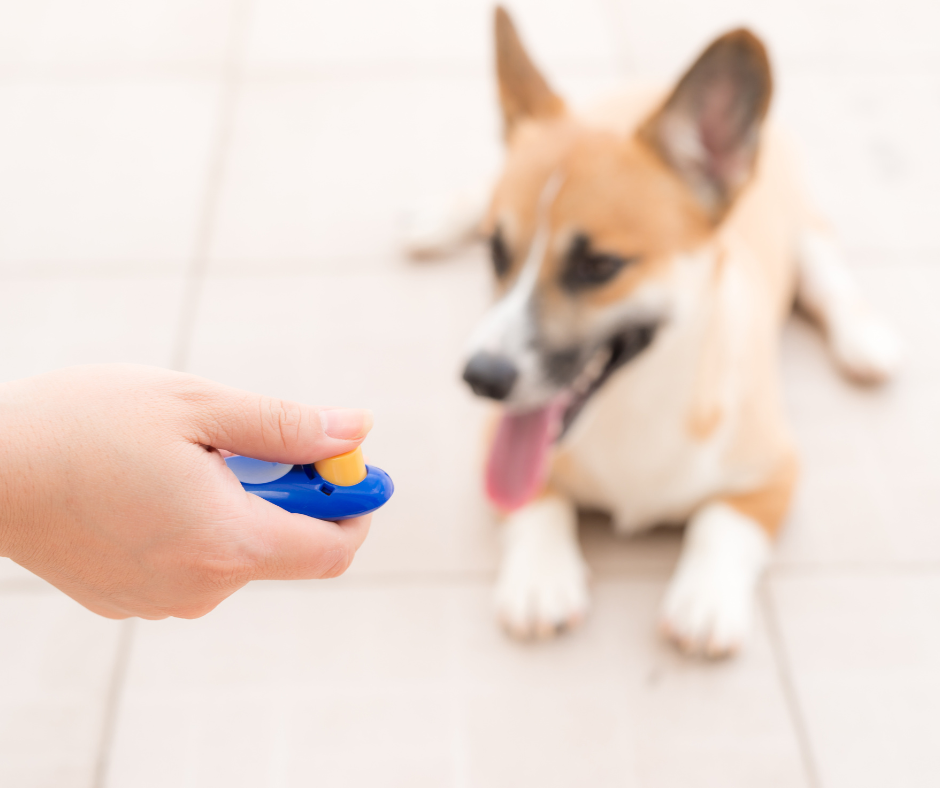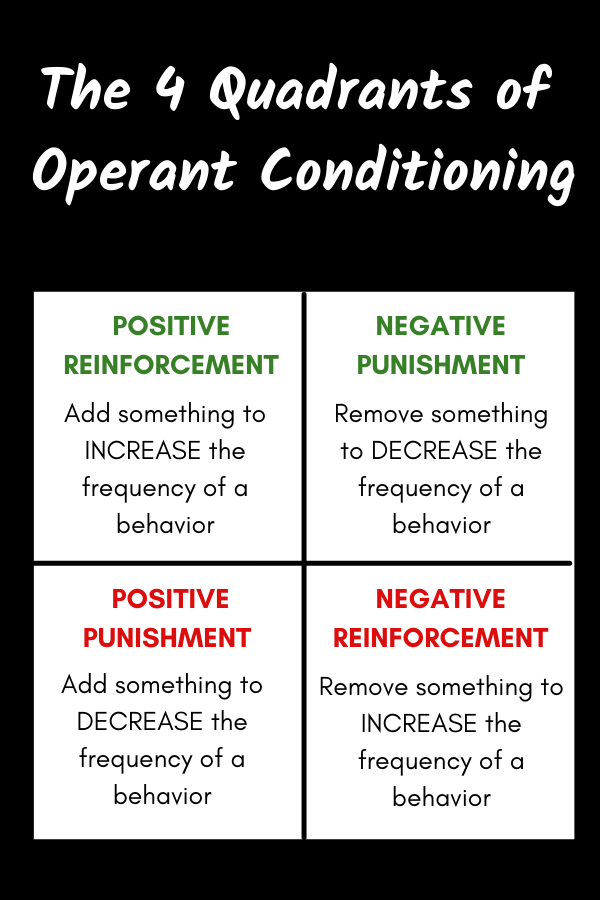Dogs are not born knowing what we want from them. As responsible pet parents, it’s our job to teach them what they need to know! The best way to do that is with force free dog training methods. What IS force free dog training? Is force free dog training “purely positive”?

In very simple terms, you have two options when it comes to training a dog:
- Reinforce (reward) what you would like them to repeat.
- Punish what you would like them to stop.
As a dog trainer myself, I’m going to explain why I believe you should choose humane, force free methods!
What is force free dog training?
Force free dog training is exactly what it sounds like: Training without force, fear, pain, or intimidation. Aversive tools or methods such as shock collars, choke chains, prong collars, hitting/spanking, or leash corrections are not used. For this reason, many people refer to force free dog training as humane or kind dog training.
However, does it actually work?!
Don’t you NEED to punish a dog to get them to stop doing things you dislike?
Yes it works, and no you do not need to add punishment to teach a dog. In fact, studies show that positive reinforcement is the MOST effective method!
Force free dog training sets your dog up for success; punishment based training sets them up for failure.
What do I mean by that?
Force free dog training involves teaching the dog to make the right choice by rewarding what we like (such as offering a treat for sitting), therefore encouraging that behaviour to occur again. Dogs are put in situations that are fair so that they can be successful. This results in engaged, happy canine learners.
What about punishment-based training?
Punishment-based training corrects what you dislike. Dogs are put in situations where they will fail, then punished for doing so.
Leash jerks, choke & prong collars, or electric shock might suppress a behavior you dislike in that moment, but they do not teach your dog what they SHOULD do instead. Harsh corrections lead to stressed, scared and shut down dogs because they’re constantly concerned about doing the wrong thing and being punished again.
Imagine how nervous you would feel around someone who constantly punished you for “mistakes”. Now imagine if you also had never been taught the “correct” way, so you had no way to even avoid making those mistakes. It would be constant stress!
This is why dogs deserve force free training methods, and why it’s quickly becoming the accepted way to train a dog.

Just like punishment-based training, force free dog training utilizes operant conditioning:
Operant conditioning sounds intimidating, but it simply means learning by consequence.
“Consequence” can either be a good thing (treats, praise, toys) or a bad thing (spank, collar pop) that happens to that dog.
The big difference is that force free training only uses 2 of the 4 quadrants (more on that below). Force free dog trainers either add or withhold things the dog wants (treats, affection, play, etc) but we NEVER add something unpleasant. Contrary to popular opinion though, force free training does not just mean giving treats!
Let me further explain operant conditioning, and how dogs learn. It’s worth understanding so that you’ll know WHY force free training works without us needing to add pain, fear, or intimidation!
The basic “rules” of how dogs learn from operant conditioning:
1- If a dogs behavior has an enjoyable consequence they will want to repeat it. An example is when you ask your dog to sit and then give him a treat when he does.
Dog: I put my butt on the ground and I got a tasty! I love tasties! I will put my butt on the ground more often!
2- If a dogs behavior has an unpleasant consequence it will happen less often. An example would be jerking on your dogs collar when they pull to prevent pulling from happening next time.
Dog: When I pulled my neck hurt. I don’t like my neck hurting. I won’t pull next time.
HOW DOGS LEARN FROM THE 4 QUADRANTS OF OPERANT CONDITIONING
The 4 quadrants of operant conditioning can get a little confusing due to our personal association with the particular words:
The first important thing to know:
In operant conditioning, positive and negative do NOT mean good and bad. Think of it more like a math problem.
Positive is the addition of something (it could be giving a treat or adding a shock collar).
Negative is the removal of something (could be taking away a dogs toy or removing pressure from prong collar).
The other important thing to know:
Punishment is not necessarily bad! Punishment and aversives (such as shock collars, prong collars, hitting your dog) are NOT the same thing.
In operant conditioning punishment only refers to causing the dogs behavior to happen less frequently.
Reinforcement refers to causing that behavior to happen more frequently.
This can be slightly confusing to wrap your head around, but in a chart the 4 quadrants look like:

Applying it: Let’s say your goal is to teach your dog to walk nicely on leash.
In this case:
The reinforced behavior (what you want increased) is polite leash walking.
The punished behavior (what you want decreased) is pulling on the leash.
HOW COULD YOU ACHIEVE THIS USING THE 4 QUADRANTS OF OPERANT CONDITIONING?
1) Positive Reinforcement (R+)
ADD something good!
To get your dog to walk nicely you could add a treat (positive) to encourage them to stay by your side (reinforcing that polite leash walking will happen again).
2) Negative Punishment (P-)
REMOVE good stuff!
Your dog pulls on the leash trying to get to a smell. Instead of being pulled over there, you stand still and prevent access. By removing access to the smell (negative) you discourage them from pulling on the leash (punishment).
Force free trainers like myself ONLY use these R+ and P- techniques to train dogs!
We do not use the next 2 quadrants like balanced (or punishment-based) trainers!
3) Positive Punishment (P+)
ADD bad stuff!
You’re frustrated with your dog pulling on leash, so you put a prong collar on them for a walk. When they pull you give a leash correction (positive) and the discomfort discourages them from pulling (punishment).
4) Negative Reinforcement (R-)
END bad stuff!
Once your dog stops pulling forward, you relax that leash correction (negative). Nice walking is then encouraged (reinforcement) by the removal of pain from the collar. This quadrant confuses people the most! Think of it as the removal of something unpleasant to reinforce the behaviour that you wanted in the first place. Force free dog trainers do not use negative reinforcement because we never would have added something unpleasant in the first place!
Force free dog trainers only use positive reinforcement and negative punishment to train a dog!
Many people incorrectly believe that force free training is “purely positive”. This isn’t true. We also withhold desired reinforcers to achieve results.

Understanding the science behind dog training makes you realize that harsh corrections or tools are not required to train a dog.
If you can get the same (or better) result using force free dog training methods, why wouldn’t you choose those?!
Choose the humane method. Choose force free with your dog!
Happy training 🙂
Disclosure: Happy Hounds uses affiliate links. Purchasing with these links will not cost you any extra, but I get commissions for purchases made through these links. Affiliate links help me to continue to offer free resources & blog posts. I would love if you used them!


+ show Comments
- Hide Comments
add a comment